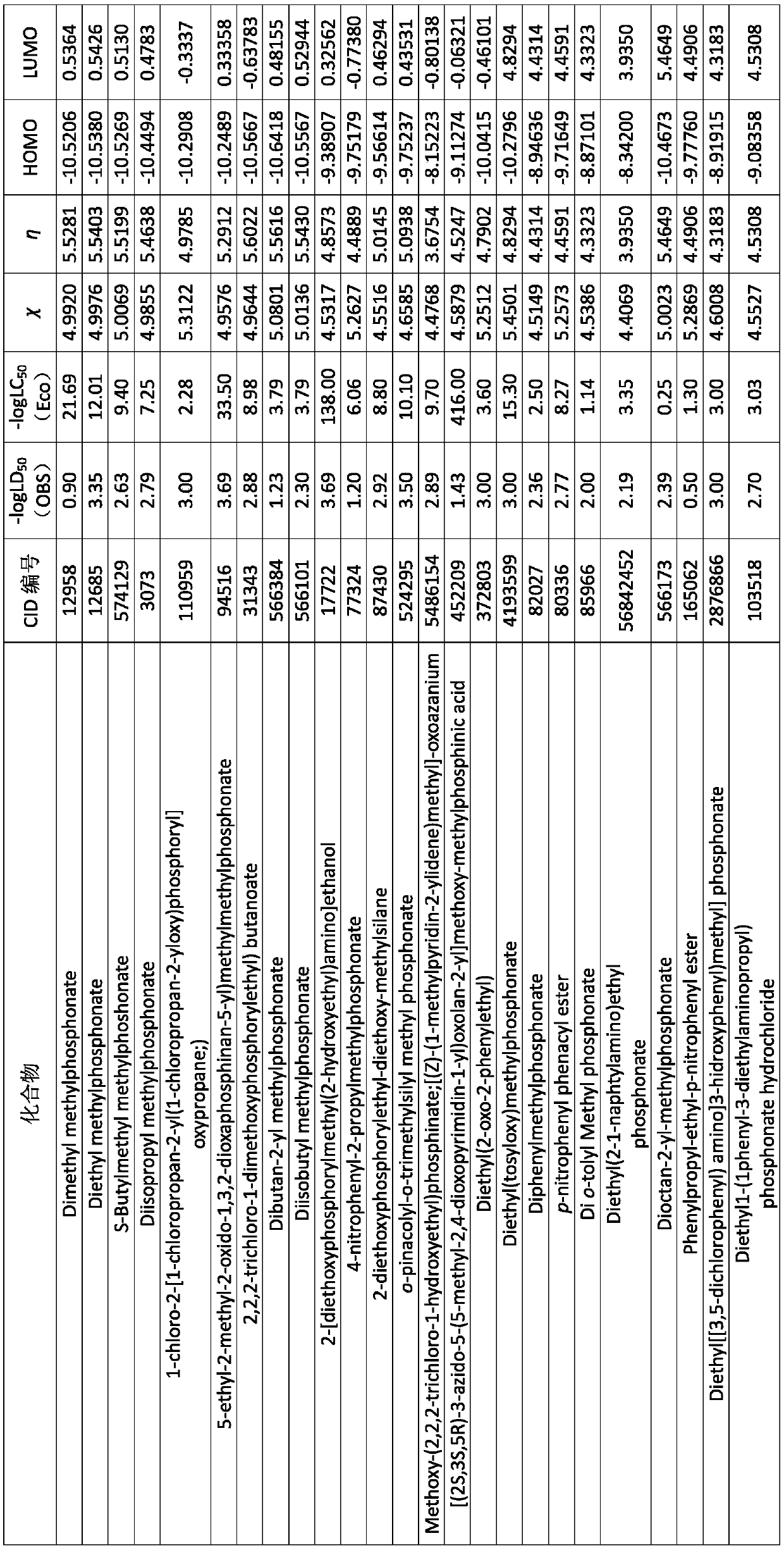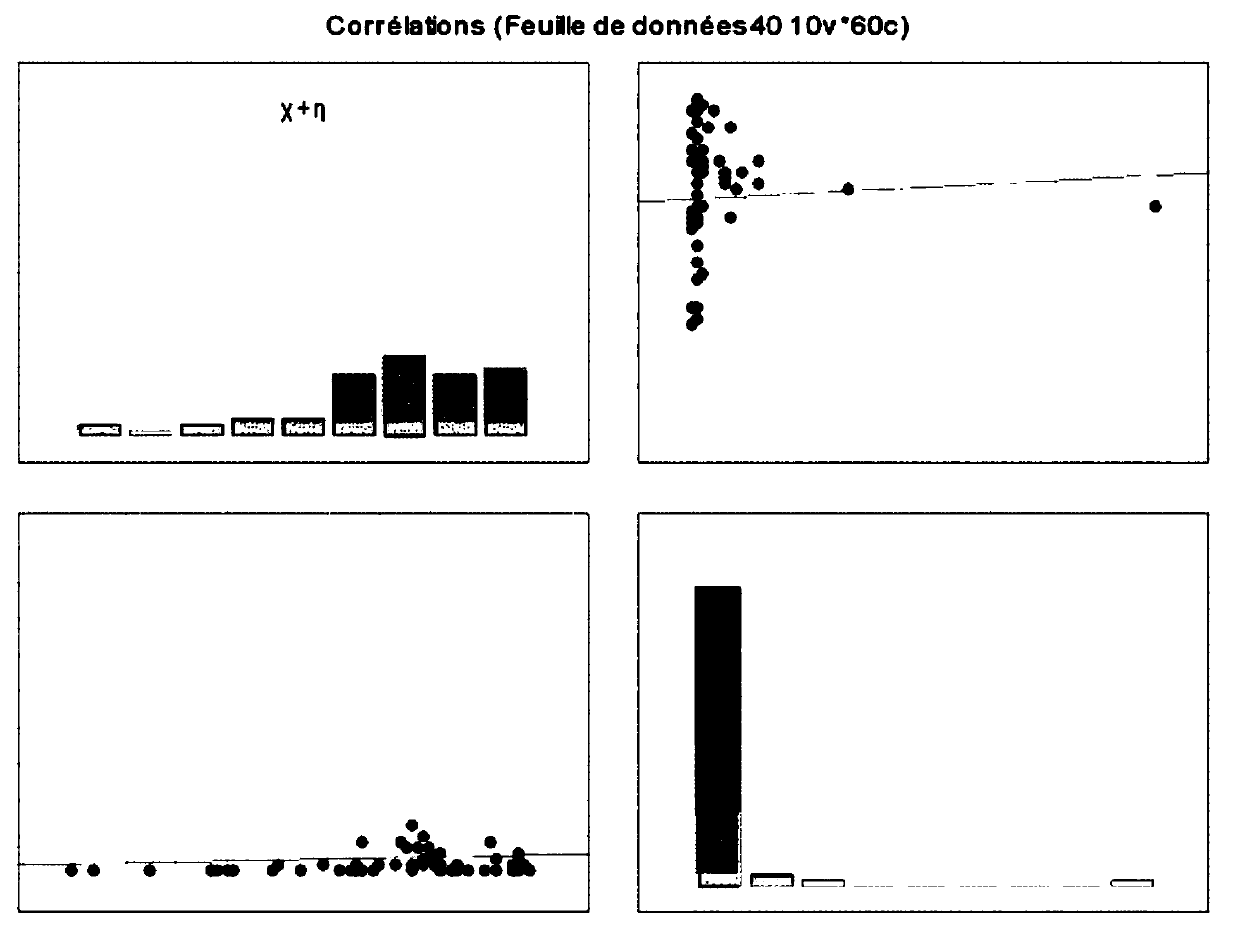Method for predicting acute toxicity of organophosphorous flame retardant on zebra fish based on QSAR/QEcoSAR method combination
An acute toxicity, organophosphorus technology, applied in the field of quantitative structure and activity relationship oriented to environmental risk assessment, to achieve the effect of important practical significance and theoretical value
- Summary
- Abstract
- Description
- Claims
- Application Information
AI Technical Summary
Problems solved by technology
Method used
Image
Examples
Embodiment 1
[0052] Given a compound (3-amino-3-iminopropyl)sulfanylphosphonic acid (CID #206039), predict its acute toxicity value for zebrafish. The molecular structure of the compound was optimized, and based on the optimized molecular structure, the structure of the organophosphorus flame retardant was optimized using HyperChem Professional software version 7.0 (http: / / www.hyper.com / Products / tabid / 354) to obtain the organophosphorus flame retardant Molecular descriptors, HOMO, LUMO, χ, η, ω are -10.5567, 0.52944, 5.0136, 5.5430, 0.90442.2673, respectively. Then, hi<0.18 calculated according to the formula (7), so the compound is within the application domain of the model and can be predicted by the model. Substituting the above descriptor values into the QEcoSAR model formula, the -logEC50 value is 4.04, of which the experimental value is 3.88, and the prediction result is good.
Embodiment 2
[0054] Given a compound, 4-[methoxy(methylsulfanyl)phosphoryl]oxy-2-methyl-1-nitrobenzene (CID #18763), predict its acute toxicity to zebrafish. The molecular structure of the compound was optimized, and based on the optimized molecular structure, the structure of the organophosphorus flame retardant was optimized using HyperChem Professional software version 7.0 (http: / / www.hyper.com / Products / tabid / 354) to obtain the organophosphorus flame retardant Molecular descriptors of agents, HOMO, LUMO, χ, η, ω are -9.77347, -1.69407, 5.7337, 4.0397, 1.4193, 4.0691, respectively. Then, hi<0.18 calculated according to the formula (7), so the compound is within the application domain of the model and can be predicted by the model. Substituting the above descriptor values into the QEcoSAR model formula gives a -logEC50 value of 5.23, of which the experimental value is 5.28, and the prediction result is good.
Embodiment 3
[0056] Given a compound, 4-bromo-2-chloro-1-[ethoxy(propylsulfanyl)phosphoryl]oxybenzenesulfonic acid (CID #38779), predict its acute toxicity to zebrafish. The molecular structure of the compound was optimized, and based on the optimized molecular structure, the structure of the organophosphorus flame retardant was optimized using HyperChem Professional software version 7.0 (http: / / www.hyper.com / Products / tabid / 354) to obtain the organophosphorus flame retardant Molecular descriptors of agents, HOMO, LUMO, χ, η, ω are -7.64462, -0.96205, 4.303, 3.3412, 1.2878, 2.7707, respectively. Then, hi<0.18 calculated according to the formula (7), so the compound is within the application domain of the model and can be predicted by the model. Substituting the above descriptor values into the QEcoSAR model formula gives a -logEC50 value of 0.84, of which the experimental value is 0.77, and the prediction result is good.
PUM
 Login to View More
Login to View More Abstract
Description
Claims
Application Information
 Login to View More
Login to View More - R&D
- Intellectual Property
- Life Sciences
- Materials
- Tech Scout
- Unparalleled Data Quality
- Higher Quality Content
- 60% Fewer Hallucinations
Browse by: Latest US Patents, China's latest patents, Technical Efficacy Thesaurus, Application Domain, Technology Topic, Popular Technical Reports.
© 2025 PatSnap. All rights reserved.Legal|Privacy policy|Modern Slavery Act Transparency Statement|Sitemap|About US| Contact US: help@patsnap.com



